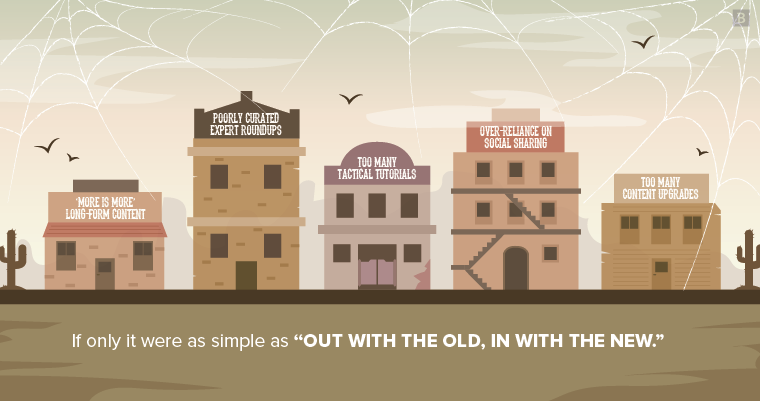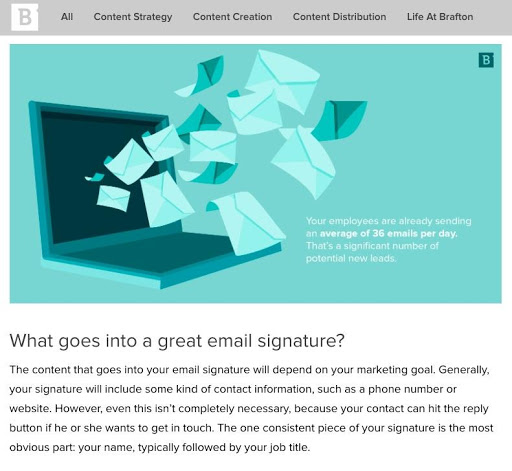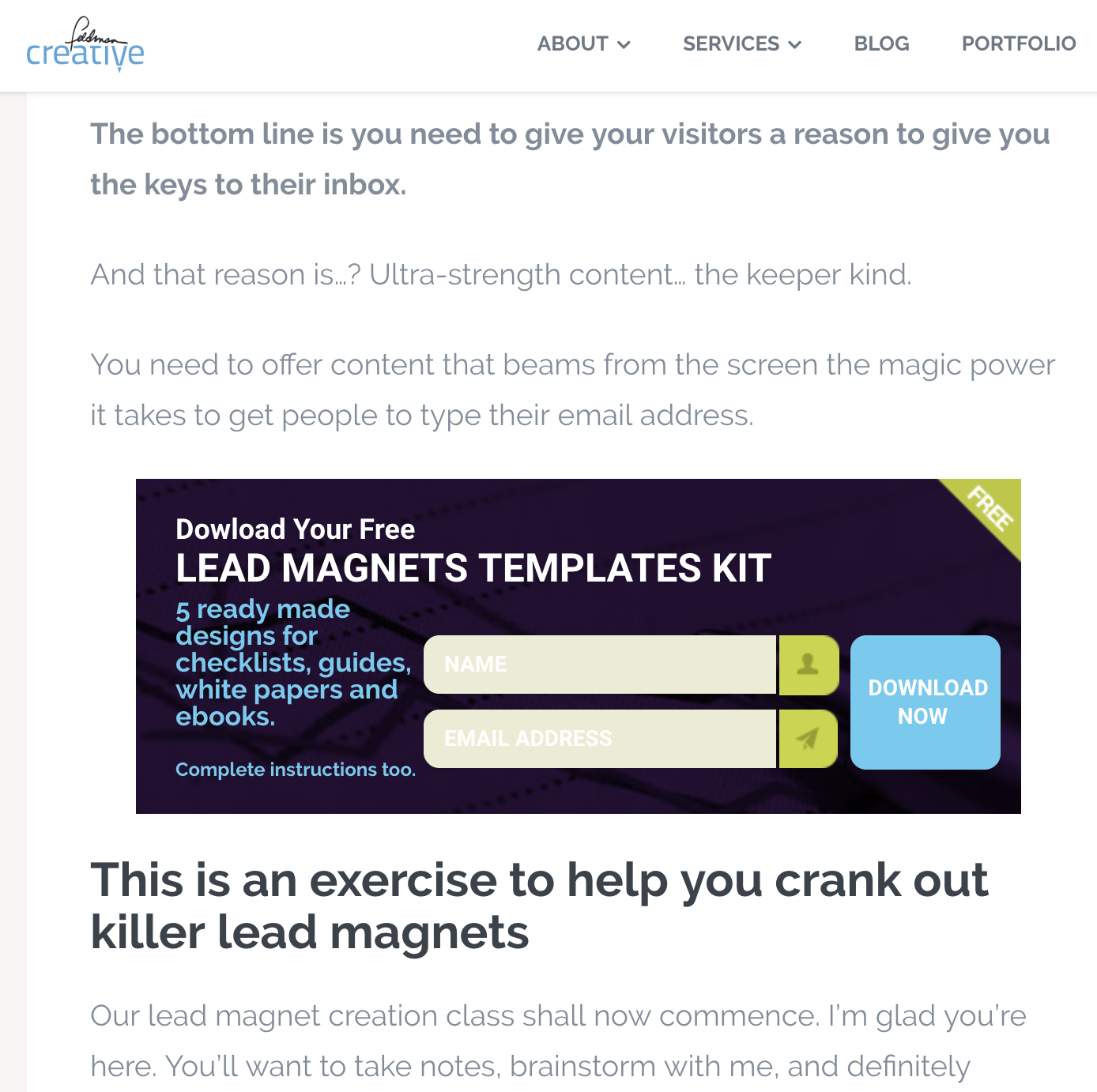Content marketing moves fast.
It’s tricky to balance tried-and-true marketing strategies with up-and-coming tactics that might be more likely to get your audience’s attention in the short term.
If only it were as simple as “out with the old, in with the new.”
Let me do you a favor and exempt you from some of that juggling act.
Here are a few content marketing tactics that aren’t as effective as they once were, despite their popularity – or that could at least use a more nuanced approach. Adjust your strategy accordingly.
1. ‘More is more’ long-form content
Ever since Brian Dean first wrote about the SEO strategy he coined the Skyscraper Technique back in 2013, content marketers have been on a never-ending quest to “out-skyscraper” each other’s content.

(Image source: https://backlinko.com/skyscraper-technique)
If you’re not familiar with it, the tactic goes like this: You find a high-quality piece of content that’s succeeding in building links and ranking power, and create something similar but longer and better. Then you perform link building outreach to people who linked to the original content that served as your inspiration, telling them, “Remember that killer resource you once linked to because it was so impressive? Well, there’s a newer taller skyscraper in town now.”
On paper, it’s a great idea. But like all great ideas, over time, marketers have warped it.
First of all, sheer saturation is a factor to consider. When Dean first popularized the technique, content marketing was vastly different and far less competitive. Creating better content than the competition was manageable. But now, more marketers are doing content right – and they’re doing it at scale right from the start. To outdo your competition, your skyscraper can’t just be an impressively thorough piece of content – it needs to be phenomenal, unique and useful.
The second problem with how modern marketers use the skyscraper technique is by misinterpreting what quality content and outreach means. Skyscraper content is usually focused more on length or effort than the value it provides to the searcher. So skyscraper efforts result in listicles with over 100 subheadings, bad outreach emails and other mistakes that sabotage your SEO success.
Which is why Dean himself recently recommended optimizing skyscraper articles to match search intent.
So, instead of trying to build a taller article for the sake of making an impression, focus your content on what searchers want – not what other publishers have done. The basic steps of the skyscraper technique are sound, as long as you’re truly aiming for reader value. After all, ranking won’t matter if searchers are turned off once they click through to your content.
2. Poorly curated expert roundups
Like the skyscraper technique, expert roundups are another tactic that’s sound in theory, but has been ruined in practice. In fact, they’re frequently used together, with marketers using expert quotes in ways that don’t make sense, just to “build their skyscraper” a bit higher.
Expert roundups created purely for SEO and ego-bait, with no thought put into the curation, are an example of content that serves the marketer more than it serves the audience. This happens when you write expert quote roundups, but:
- You don’t properly vet the experts you’re quoting to ensure they’re qualified.
- You don’t edit or condense anyone’s quotes to keep the content focused.
- You don’t add any of your own insight or commentary to frame and add context to the quotes.
Instead, we recommend using subject matter experts to enhance your own content, instead of relying on them to create it for you. Simply publishing a list of random quotes isn’t helpful to your audience. But building those quotes into a larger piece of content with organization and structure lets you leverage experts and influencers in your content, without sacrificing the reader’s experience.

3. Too many tactical tutorials
Another common mistake from well-meaning content marketers? Too much of a focus on teaching the tactical, without addressing the strategy behind it. The inverse problem, too much focus on the big picture without the details, is also starting to manifest more as well.
For example, there are a lot of publications that show you how to use the latest features and tools on social media. They might talk about Instagram Stories or the YouTube community tab, but never how to use these different features in a way that supports your overall audience acquisition, nurture and retention efforts.
As a result of this hyperfocus on actionable content, audiences have gotten overwhelmed with tactical information. What’s more, they lack the strategic vision and understanding to put the tactical tutorials to good use.
As business coach Russell Ruffino has said, “We’re moving from an information economy to a transformation economy. People are beginning to realize that more information isn’t the answer to their problems. For example, they’ve already read a million articles about ‘The 7 Diet Secrets Everyone Should Know,’ but they’re still overweight.”
To help your audience with a transformation, you need to pair tactical and actionable information with content that helps them understand the strategy and big picture behind everything.
For an example of this done right, take Brafton’s tutorial on creating a branded email signature:

(Image source: https://www.brafton.com/blog/email-marketing/cool-email-signature-ideas-for-marketing-your-brand/)
The 1,500+ word blog post invests just as much, maybe even more, scroll depth explaining the what, when and why behind branded email signatures as it does telling you how to create one. It doesn’t just throw technical information at you; it provides context that helps you take action and achieve transformation.
Frame your content with plenty of context on the “why,” and you’ll be in far better shape, even if the meat of your message is about actionable advice.
4. Over-reliance on social sharing
The next mistake, over-reliance on social sharing, likely stems from not staying in tune with the state of social media. If you’re still optimizing your social media strategy for how algorithms operated in 2014, then you’re likely struggling to get seen on social these days.
Back then, it was easy to draw eyeballs to your brand’s organic posts on social media. Your content distribution strategy could largely depend on loyal readers sharing your content for you. But organic reach on social media has drastically dwindled since, leaving social shares less powerful for your marketing strategy than they used to be.
That’s true of not only your business’s own posts, but your readers sharing it as well. Public social sharing fell 50% between 2015 and 2017, and shares via private or “dark social” communication became more prevalent. And because of this, social media algorithms have changed the way readers interact with content.
As a result, you can’t rely on substantial traffic from readers sharing your content. If you haven’t already, you need a strategic content distribution plan that puts you back in control. Your team will need additional ways for your target audience to see and interact with your content, beyond just simple organic social media reach. And if you used to emphasize share buttons as calls-to-action on your pages, you might want to consider emphasizing alternative “next steps.”
5. Too many content upgrades
Finally, the last content marketing tactic to reconsider this year is building out a huge resource library of content upgrades. Over the years, lead magnets like content upgrades become more important, but lately there seems to be a disproportionate focus on quantity, at the expense of quality.
It seems like every marketer wants to offer what looks like a vast library of premium downloadables the size of industry leaders, without the resources to manage such a workflow nor the audience to make it worthwhile.
As a result, too many marketers create new content upgrades for every single blog post they write, most of which will barely be seen or downloaded. This is a major waste of resources.
Creating new lead magnets that won’t generate leads simply isn’t an effective use of your team’s time. Instead, focus on creating fewer, stronger lead magnets you can promote over and over.

(Image source: https://feldmancreative.com/blog/lead-magnet-ideas-titles-templates/)
Above is a great example of a content upgrade done right. Here, content marketing thought leader Barry Feldman is offering a packet of lead magnet templates as a downloadable file within an epic blog post he wrote about how to create good lead magnets. Meta!
Always adjust
Content marketing trends will likely always move too fast for our strategies to remain static.
Adjust, experiment and try new tactics to keep up with your audience and stay ahead of everyone else demanding their attention.





